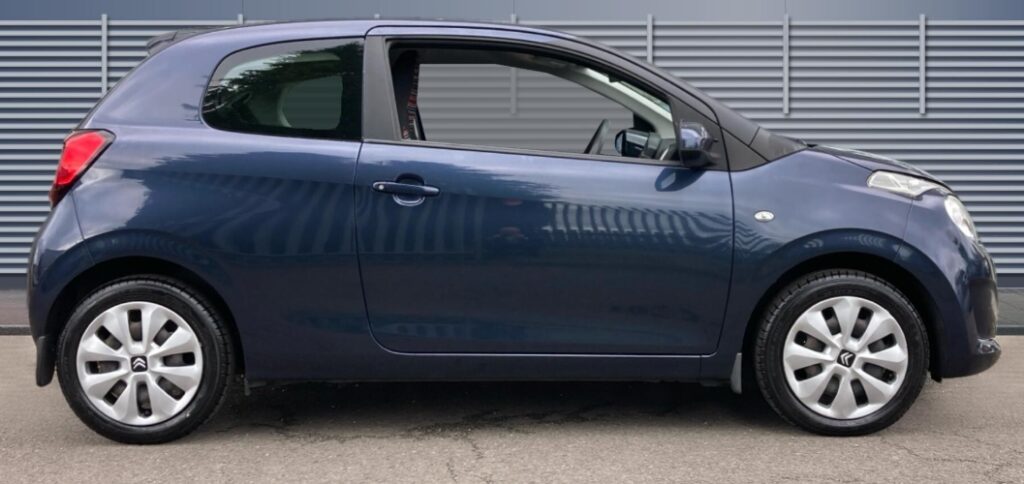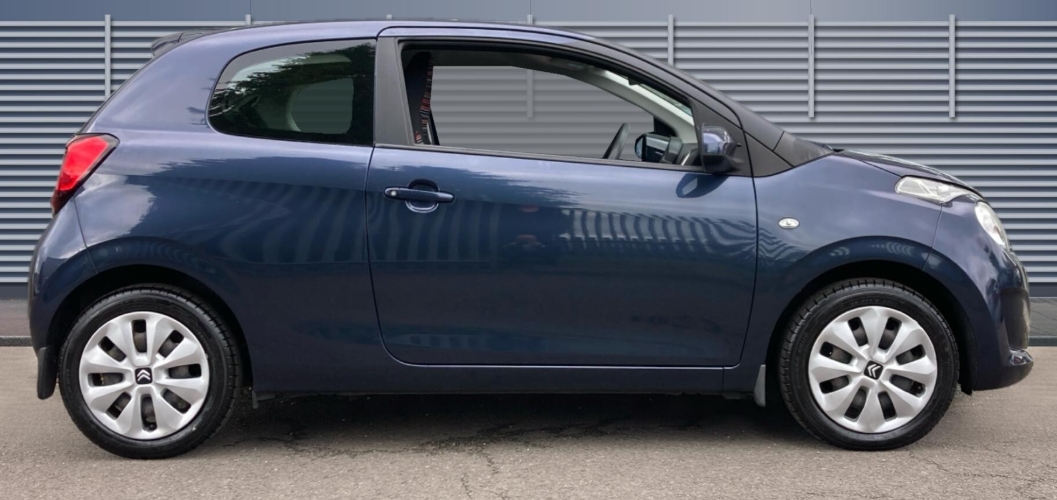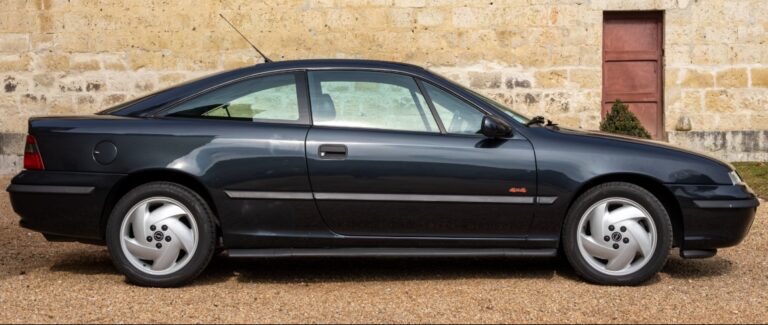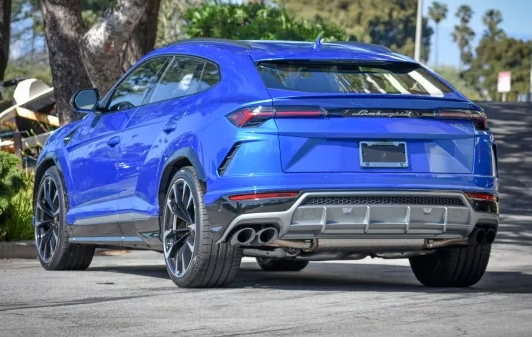The Evolution of the Citroën C1
The Citroën C1 is a notable subcompact city car that has captured the attention of urban drivers worldwide since its debut in the late 2000s. Known for its affordability, compact size, and quirky design, the C1 has undergone several updates and redesigns over the years to stay relevant in a competitive market. This article chronicles the evolution of the Citroën C1, detailing its production timeline, model variants, trim levels, and significant changes from its inception to the present.
Origins and Introduction (2005–2014)
Development and Launch
The Citroën C1 was launched in 2005 as a joint venture between Citroën and Toyota, sharing its platform and components with the Toyota Aygo. This collaboration was part of a broader strategy to produce small, affordable city cars for European markets, with the Peugeot 107 and Toyota Aygo sharing the same architecture.
Initial Models and Trim Levels (2005–2014)
The first-generation C1 was available in several trim levels, primarily aimed at budget-conscious consumers:
- VT: The base model, offering essential features such as manual windows, basic audio, and cloth upholstery.
- VTR: A sportier variant with additional features such as alloy wheels, fog lights, and upgraded interior options.
- VTR+: The top-tier version included air conditioning, power windows, a CD player, and sometimes optional features like a trip computer.
Design and Features
The first-generation C1 was characterized by its distinctive rounded styling, compact dimensions, and a choice of vibrant colors. It was offered with a range of small petrol engines, primarily 1.0L and 1.4L variants, emphasizing economy and ease of city driving.
Production and Market Performance
Produced at the Kolín plant in the Czech Republic, the C1 quickly gained popularity for its affordability and maneuverability. It became a common sight in European cities and was praised for its low running costs.
First Facelift and Mid-Cycle Refresh (2009)
Update in 2009
In 2009, Citroën introduced a mid-cycle facelift to refresh the first-generation C1. The updates included:
- Restyled front bumper, grille, and headlights to give the car a more modern appearance.
- New color options and interior trims.
- Slight improvements in interior quality and equipment levels.
Trim Levels Post-2009
The trim levels generally remained consistent, but some markets saw additional options:
- VT: Continued as the base model.
- VTR: Maintained its sporty appeal.
- VTR+: Continued as the well-equipped variant, now with minor interior upgrades.
- Urban Ride / Urban: An entry-level variant with minimal features aimed at ultra-low-cost segments.
- Vibe: A special edition with unique styling cues and added features.
Engine Options
The engine lineup remained largely unchanged, with 1.0L and 1.4L petrol engines. The 1.0L was particularly popular for its excellent fuel economy, while the 1.4L variant offered slightly more power.
Second Generation and the 2014 Redesign
Introduction of the Second Generation (2014)
In 2014, Citroën launched the second-generation C1, built on an all-new platform that shared components with the Peugeot 108 and Toyota Aygo (third generation). The new model marked a significant redesign, emphasizing style, comfort, and technological features.
Design and Features
The second-generation C1 adopted a more modern, youthful look, with a larger grille, sharper lines, and distinctive LED daytime running lights. The interior was upgraded with better materials, a more intuitive dashboard, and available touchscreen infotainment systems.
Trim Levels and Variants
At launch, the second-generation C1 was offered in several trims:
- Alive: The entry-level variant, featuring manual windows, basic audio, and minimal interior features.
- Feel: Mid-range trim with added comfort features like air conditioning, upgraded audio systems, and alloy wheels.
- Urban Ride: A special edition emphasizing urban styling, with unique decals and color options.
- PureTech Models: The new generation introduced turbocharged 1.0L PureTech engines, offering improved performance and efficiency.
Special Editions and Customization
Citroën and its partners offered numerous customization options, including contrasting roof colors, decal packs, and accessory packages, appealing to younger buyers seeking personalization.
Notable Features and Technological Advancements
Throughout its evolution, the C1 saw several technological updates:
- Safety Features: Introduction of Electronic Stability Control (ESC), Hill-start Assist, and multiple airbags in later models.
- Connectivity: Incorporation of touchscreen infotainment, Bluetooth connectivity, and rear parking sensors.
- Engine Efficiency: The shift from naturally aspirated engines to turbocharged PureTech variants significantly improved fuel economy and emissions.
Production and Market Presence
The Citroën C1 was produced at the Kolín plant until 2018 when production shifted to a different model lineup. Its main markets included Europe, with strong sales in countries like the UK, France, and Germany. The car’s compact size and affordability made it particularly popular among city dwellers and first-time car buyers.
.
THIS might be a great place to get your new car from!
Or for those who are into the “car flipping” business, here’s an excellent resource for you!

.
Discontinuation and Legacy
End of Production
Citroën officially discontinued the C1 in 2022, concluding a successful run spanning over 17 years. The decision was driven by changing market dynamics, the push towards electric vehicles, and the integration of the C1’s segment into newer models.
Legacy and Influence
The C1’s success paved the way for subsequent small city cars from Citroën and its partners. Its quirky design, affordability, and versatility have cemented its place as a key player in urban mobility.
Summary of Major Model Years and Variants
| Year Range | Model / Generation | Notable Features / Trim Levels | Engine Options | Key Updates |
|---|---|---|---|---|
| 2005–2009 | First Generation | VT, VTR, VTR+ | 1.0L, 1.4L petrol | Initial launch, vibrant colors |
| 2009–2014 | First Facelift | VT, VTR, VTR+, Urban Ride, Vibe | 1.0L, 1.4L petrol | Restyled exterior, interior upgrades |
| 2014–2022 | Second Generation | Alive, Feel, Urban Ride, PureTech | 1.0L Turbo petrol | Modern design, tech features, customization |
Final Thoughts
The Citroën C1’s journey from its debut to discontinuation reflects the broader trends in urban mobility and compact car design. Its playful aesthetics, focus on affordability, and adaptability have made it a staple in European city streets. Over its lifespan, the C1 evolved significantly, embracing technological advancements and customer preferences, ensuring its relevance for nearly two decades.
Although production has ceased, the Citroën C1 remains an exemplar of efficient, city-oriented vehicle design, and its influence persists in the compact cars that follow.
Disclaimer: The specifications and trim levels mentioned pertain primarily to European markets and may vary by region.








